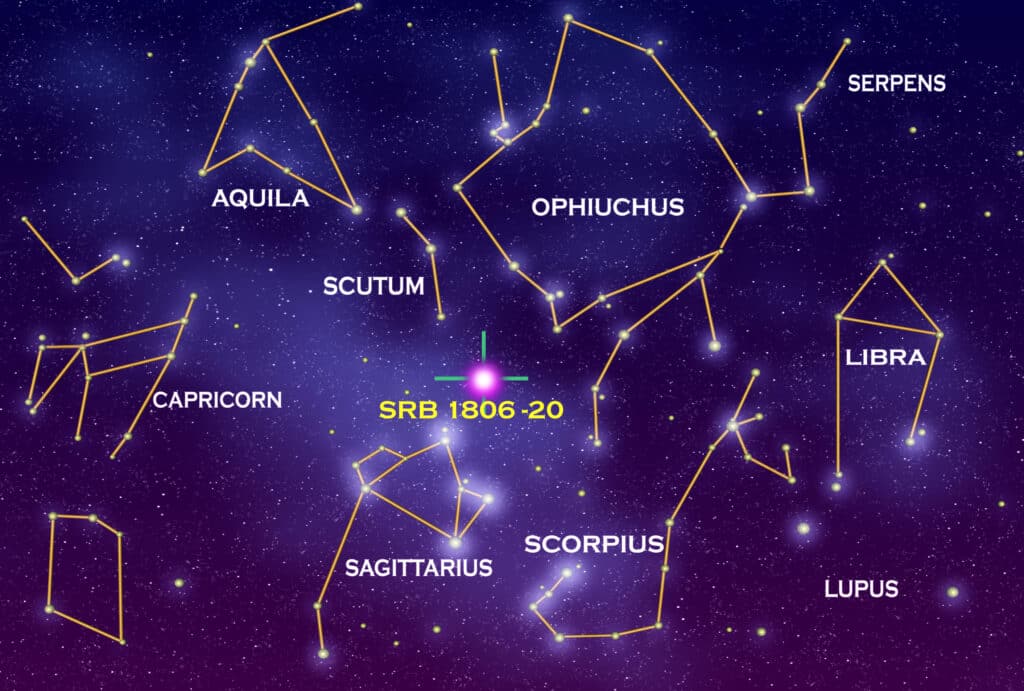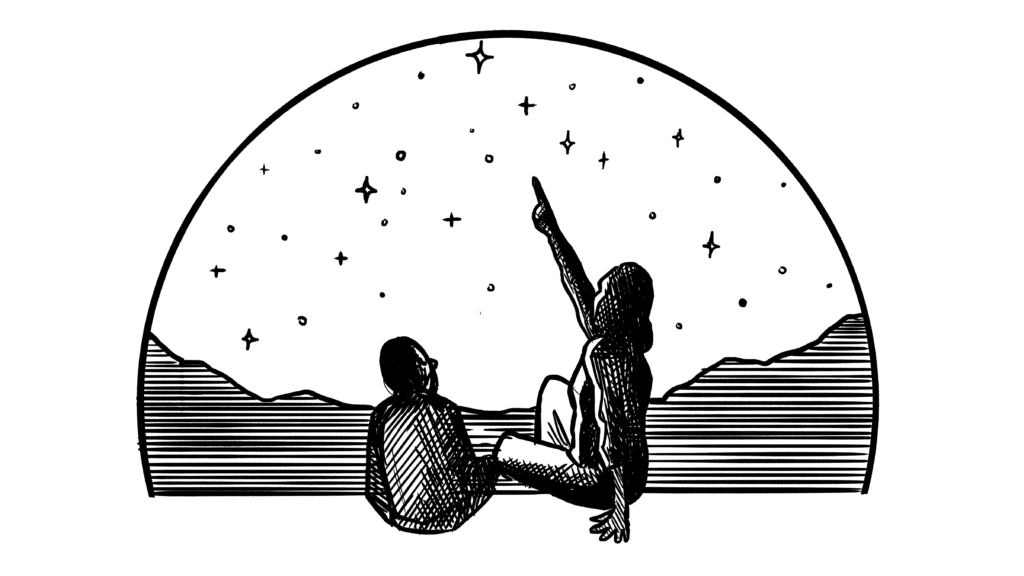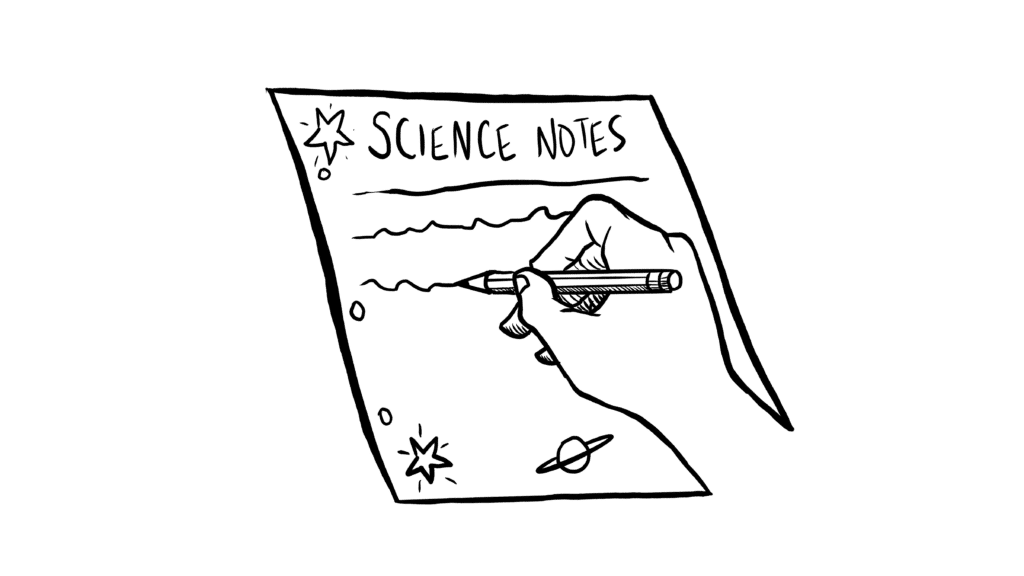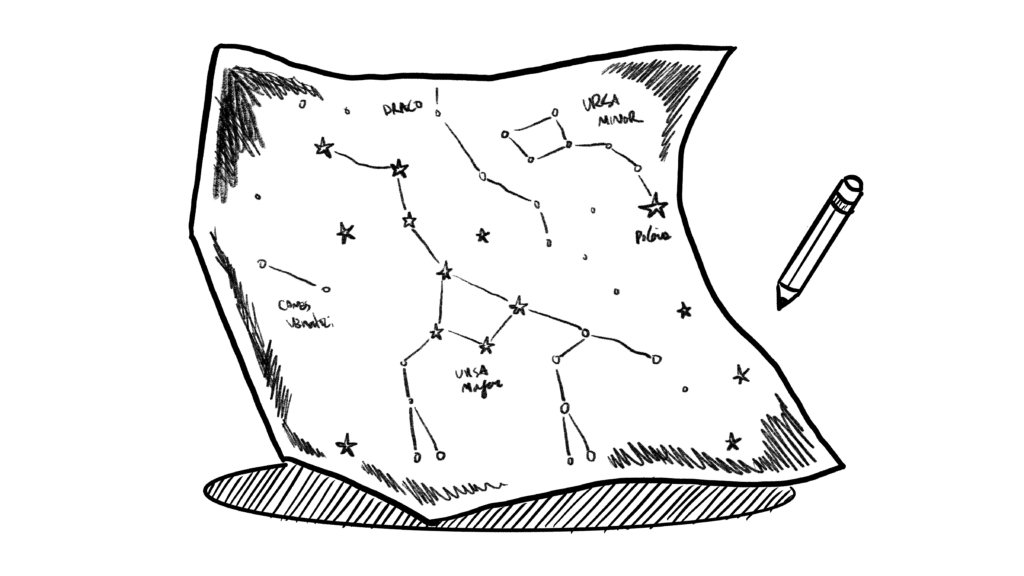What stars would you see on a midnight picnic?
Gather up your family for some night time stargazing. When looking up at the night sky, you may observe a number of natural and human-made objects. Some cultures believe the objects in the sky form different objects and animals. What do you see?

Credits: NASA
Materials Needed
Pencil
Paper
Sky Mapping Tool
Flashlight
Need a Sky Mapping Tool?
Nothing beats a quiet night gazing at the stars. Well, nothing except knowing which stars you’re seeing. That’s where a stargazing app is useful. These apps can map out exactly which stars and planets you’re seeing:
Google Sky
Google Sky Maps is a celestial map that shows you objects like stars, constellations, galaxies, planets, or the Earth’s moon.
Stellarium Web
Night Sky Apps
Whether you use these resources to assist you in stargazing in your backyard, or a quick observation session with your telescope, these astronomy apps can improve your overall experience.
Activity Instructions
Head outside on a clear night.
Make observations about what you see in your night sky.

Take notes.
Record notes about several object’s brightness, color, size, and location.

Use a sky mapping tool.
Try to identify the objects you can see with the sky mapping tool. You may need a flashlight to see your sky map!

What did you observe?
Let’s Think…
How could you tell the difference between a star and other space objects like planets, meteors, or space stations?
How did light from buildings and street lamps change your observations?
If you used more than one sky map, which one was more helpful? Why?
What tools could have helped you see the stars better than your eyes?
What’s the Science?
Because Earth is spinning, and we are attached to Earth, the objects in the sky appear to rotate around us. This is why the location of many stars and planets change depending on what time of night you are observing.
The season you are making observations matters as well. Earth completes one turn on its axis every 23 hours and 56 minutes, instead of every 24 hours. So in addition to the nightly movement of stars, the 4 minute rotation difference means that the sky appears to shift slightly each night, revealing different constellations at different times of the year.
More Ideas
What’s in your night sky tonight?
Can’t get outside tonight? City lights blocking your view? Open this interactive sky chart to create a custom map of the night sky for your location at any date and time!
Edible Constellations
Need a snack for your stargazing picnic? Create your own edible constellations with pretzel sticks and marshmallows.
Explore All
Thanks to Our Sponsors
This project is made possible by a grant from the Marie Lamfrom Charitable Foundation.
Featured Image Credit: NASA/JPL/California Institute of Technology
